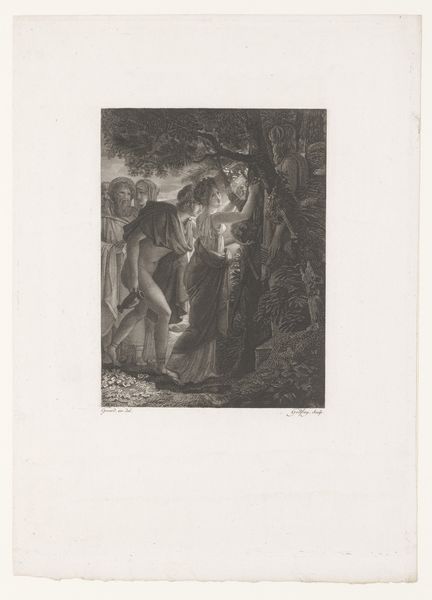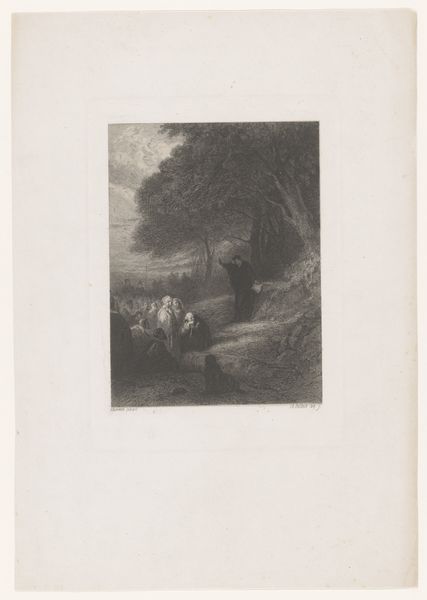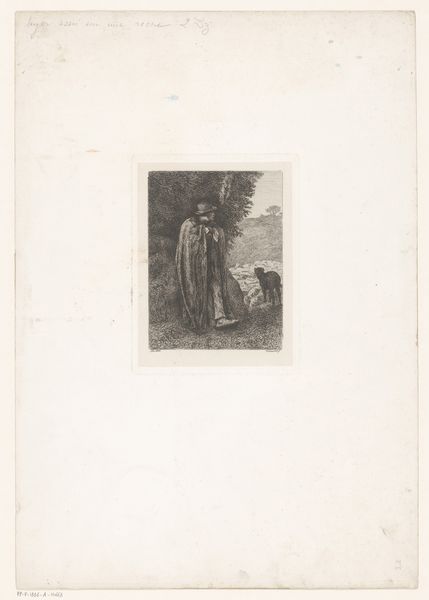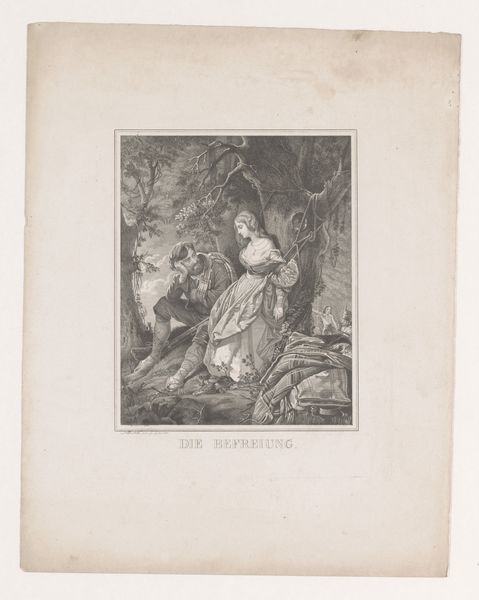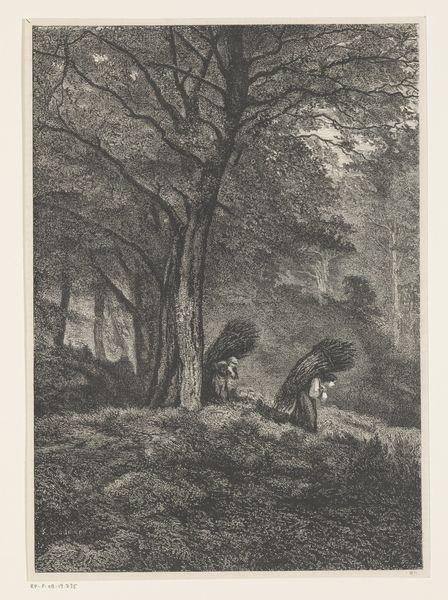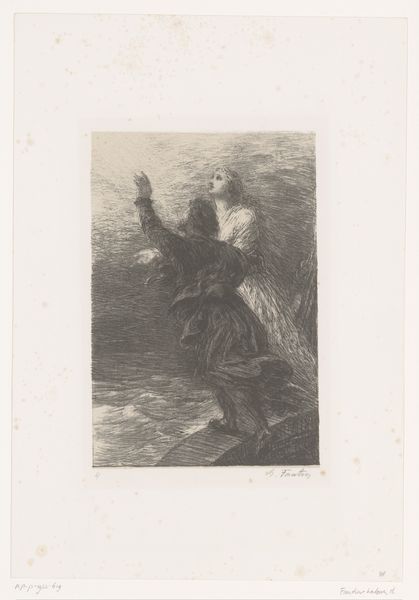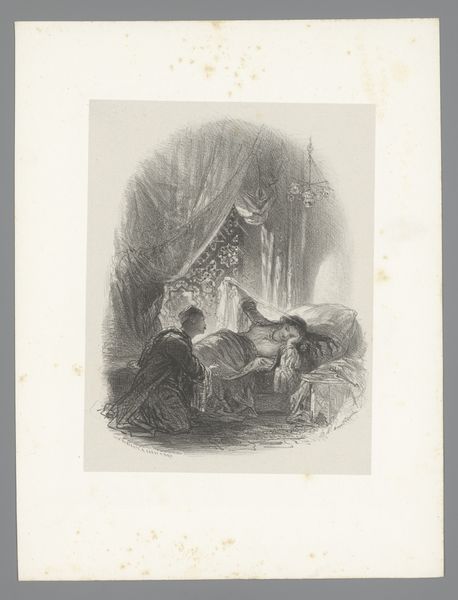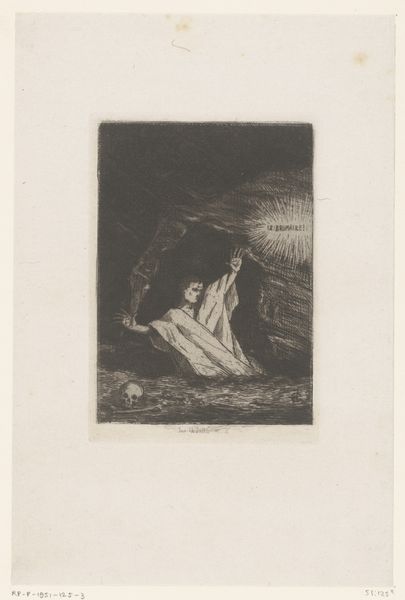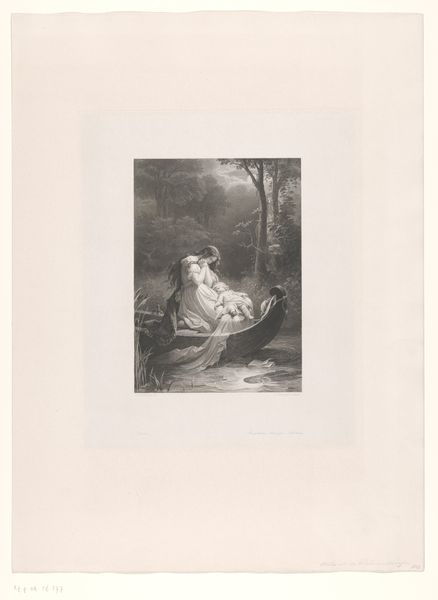
Dimensions: height 347 mm, width 257 mm
Copyright: Rijks Museum: Open Domain
This print, "Twee sprokkelaarsters," or "Two Gleaners," was made by Willem Frederik Roorda using lithography, a printmaking technique that relies on the contrast between oily and water-based substances. Lithography democratized the production of images during the 19th century, allowing for the relatively easy reproduction of artworks, and offering a more immediate and expressive quality compared to earlier printmaking methods. Here, Roorda uses the medium to depict a humble scene, two figures gathering fallen branches in a forest, emphasizing the texture of the wood, the weight of the bundles they carry, and the overall somber mood. The choice of lithography underscores the social context of the image. While Roorda may have conceived this as a work of fine art, the inherent reproducibility of lithography connects it to wider issues of labor, politics, and consumption, and also subtly acknowledges the amount of work involved for those who needed to gather wood in order to survive. Considering the materials and processes involved in its making allows us to understand its full meaning, challenging any assumptions that it is simply a straightforward depiction of rural life.
Comments
No comments
Be the first to comment and join the conversation on the ultimate creative platform.
